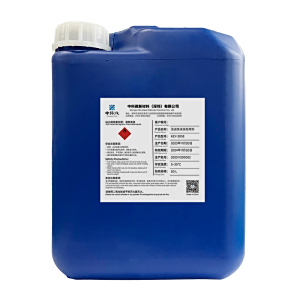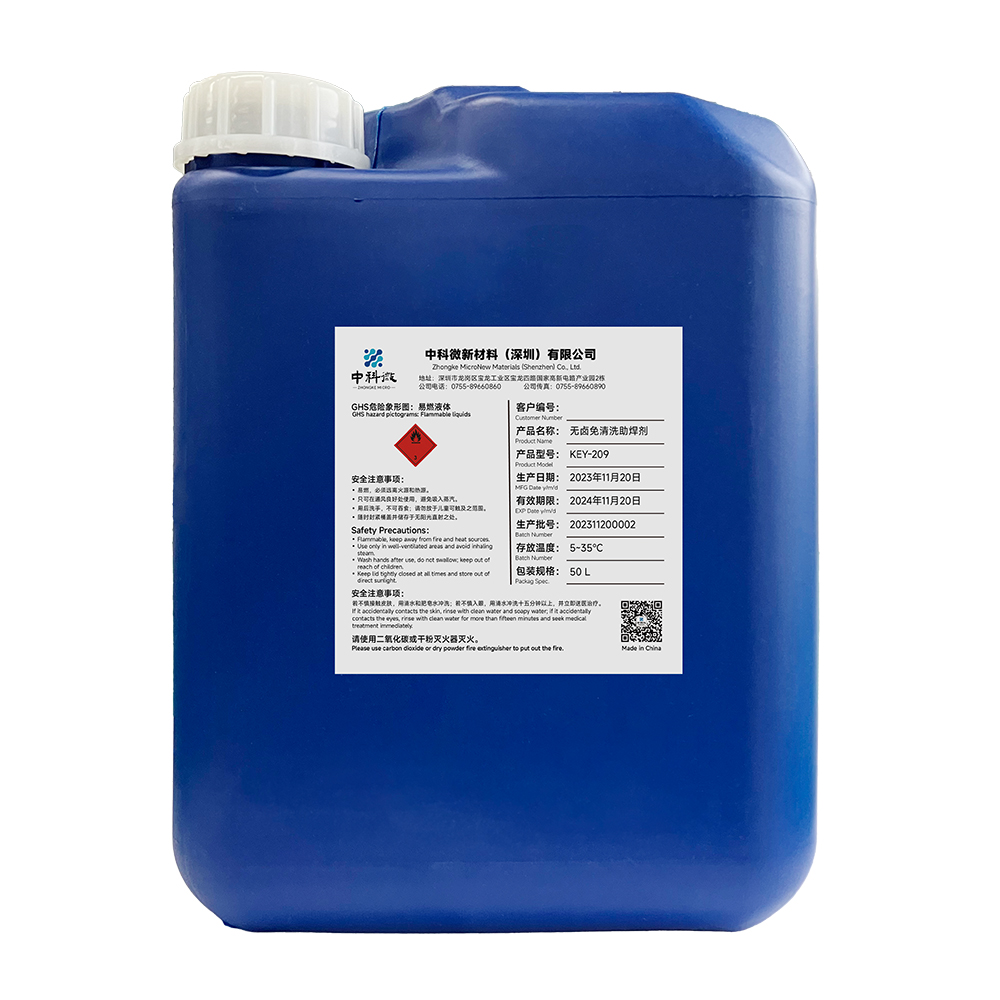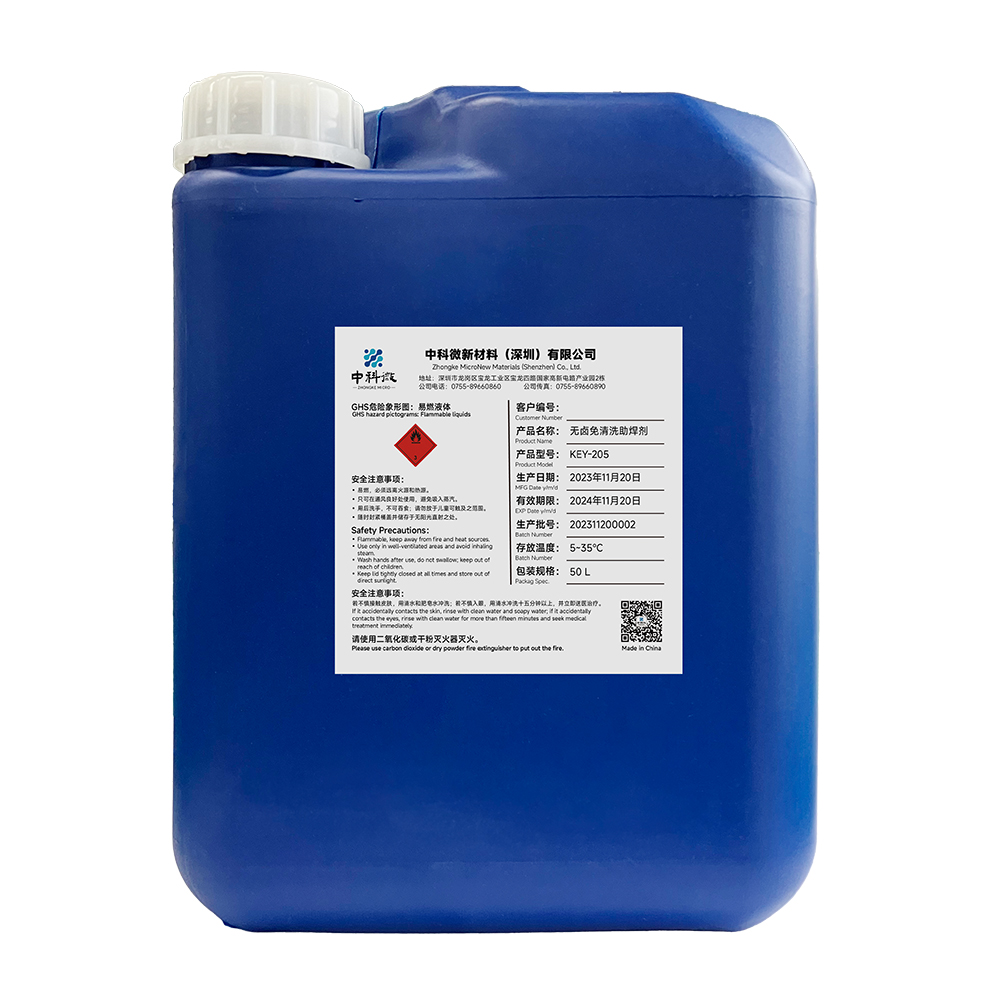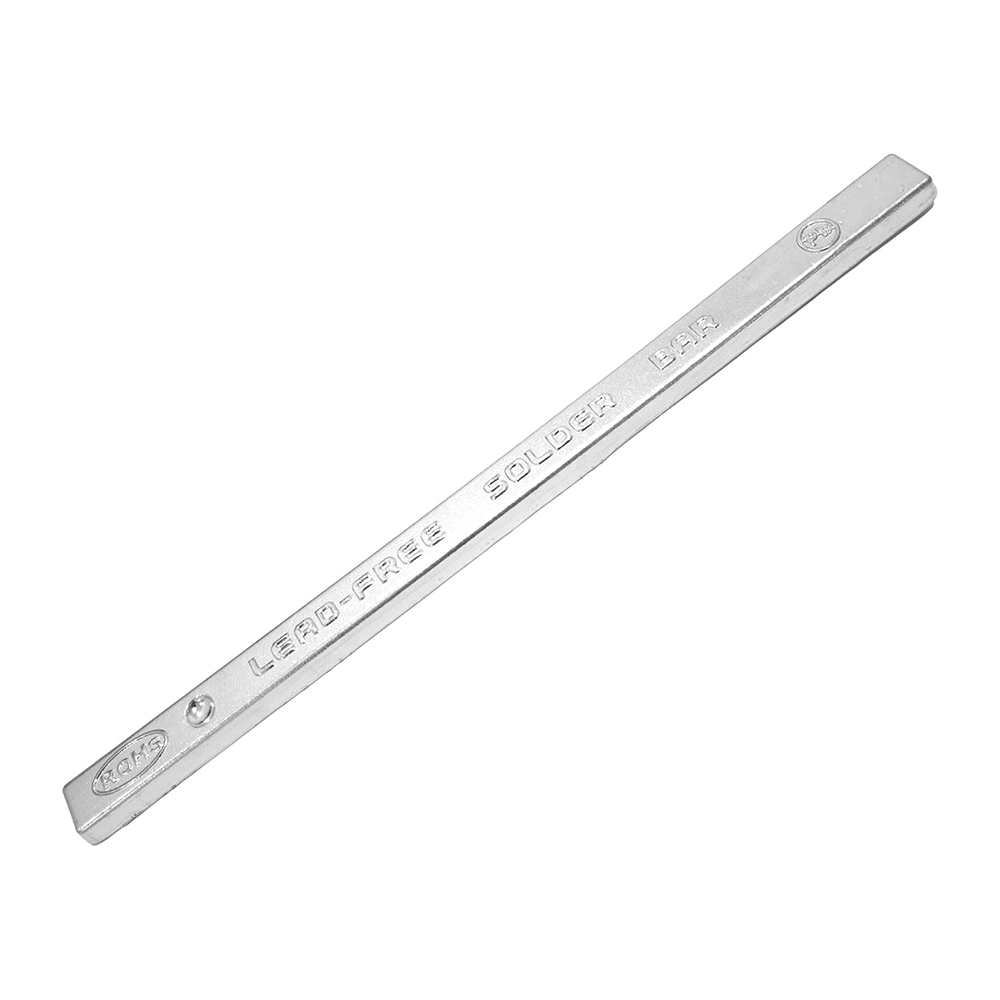
Scan the QR-code to get technical consultation immediately
KEY-205E Halogen-Free, No-Clean, Lead-Free Flux
Product Highlights
Lead-Free and Environmentally Friendly Formula | Halogen-Free Ingredients | No Cleaning |
Good Wettability | Wide Applicability | Safe and Non-irritating |
Product Introduction
KEY-205E No-clean lead-free solder flux is composed of high-quality modified rosin resin, organic activator, multiple additives and isopropyl alcohol. The solder flux has excellent solderability, full and bright solder joints, good tin penetration and uniform tinning; it can meet the soldering needs of various lead-free solders and is an ideal no-clean solder flux for lead-free solder soldering.
Product Features
Effectively reduce the surface tension of lead-free solder and improve the fluidity and solderability of solder.
Strong wetting power and good tin penetration of through holes can effectively make up for the shortcomings of poor tin penetration of lead-free solder.
The post-soldering residue spreads evenly, has good finish, and has excellent electrical reliability.
It does not contain environmentally prohibited substances such as RoHS and is an environmentally friendly solder flux.
Scope of Application
This product can be used with various lead-free solders and is widely used in electronic industries such as power products, computer motherboards, graphics cards, communication equipment, audio and video equipment, refrigeration equipment, and medical equipment. It can be used by spraying, dipping and foaming processes.
Physical and Chemical Parameters
Item | Parameters |
Model | KEY-205E |
Welding machine classification | REL0 |
Appearance | Light yellow transparent liquid |
Non-volatile matter content (wt%) | 1.70±0.20 |
Specific Gravity (g/cm3@20℃) | 0.797±0.010 |
Acid value (mgKOH/g) | 36.50±5.00 |
Expansion rate (mm2) | ≥80 |
Silver chromate test paper | PASS |
Halogen content(%) | L0 |
Copper mirror corrosion | PASS |
Corrosion test | PASS |
Surface insulation resistance (Ω) | ≥10×108 |
Electromigration | PASS |
RoHS | PASS |
Operation Mode
Spraying: Pay attention to cleaning the nozzle to make the flux atomization reach the best state, and make the PCB pass through the best atomization area to ensure that the flux is sprayed evenly on the PCB and the spray amount is appropriate. Do not spray the flux on the components.
Dipping: The depth of the PCB board immersed in the flux cannot exceed 2/3 of the board thickness, and the flux cannot be dipped on the top surface of the board.
Foaming: Pay attention to the selection and cleaning of the foaming tube to achieve the best foaming effect. The depth of the PCB board immersed in the foam is preferably 1/2-2/3 of the board thickness. It is best to add a wind knife to make the flux coating even, remove the excess flux, and avoid the flux coating on the components. The solvent is easy to volatilize during use. If the specific gravity increases, the diluent and flux stock solution used with the flux should be used to adjust the specific gravity. After a period of use, the active ingredients in it will be consumed, causing the flux activity to decrease, and the flux in the flux tank needs to be replaced regularly (it is recommended to be replaced every 4-7 days).
Application Guide
Item | Parameters | Remark |
Plate preheating temperature (℃) | Double sided board 80- 100 | Single sided board 70-90 |
Bottom preheating temperature (℃) | Double sided board 90- 120 | Single sided board 80-110 |
Tin furnace temperature (℃) | 255-275 | Determined according to solder requirements (actual measurement) |
Conveying speed (m/min ) | 1.0-1.5 | / |
Tinning time (S) | 2.5-5.0 | / |
Orbital inclination (0) | 5-8 | / |
Flux application amount (solid amount) (μg/cm2) | Single Wave: 160-260 Single Wave: 180-320 | Do not apply flux to the surface of components |
Packaging Specifications | 18L/barrel, 20L/barrel, 50L/barrel, 100L/barrel, 250L/barrel | |
Please Note
- After opening this product and taking out the used part, the lid must be closed tightly to prevent the solvent from volatilizing and causing a change in specific gravity.
- Used flux and unused flux cannot be placed in the same packaging barrel. After the flux is opened, if there is still residual flux in the barrel, it cannot be left open to the air and the lid should be tightened as soon as possible.
- The container containing the flux should be kept clean to prevent dirt and other substances from mixing into the flux and affecting the quality of the flux.
- If there are special requirements for electronic products, it is recommended to perform relevant compatibility tests.
- For safety protection and other precautions, please refer to the MSDS of this product.
Storage and Transportation Requirements
- Before transportation, check whether the packaging container is complete and sealed;
- The installation location should be away from power sources, fire sources and other places;
- During transportation, ensure that the container does not leak, collapse, fall or be damaged
- It is strictly forbidden to mix and transport with chemicals such as oxidants;






